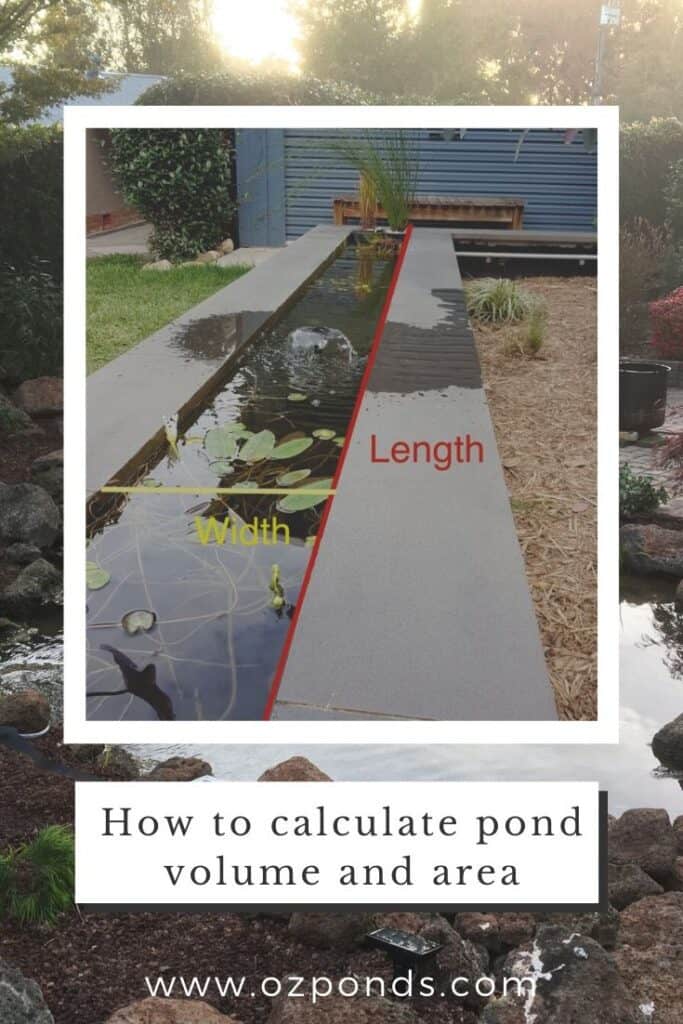This article will show you how to calculate pond size in area and volume.
Calculating how many litres or gallons your pond holds is not an exact science if the pond has irregular shapes and depths.
The same goes with calculating surface area. Yet there are calculations we can use to give us an educated guess.
If the pond is a perfect shape and consistent depth we can calculate the surface area and volume precisely.
Calculating surface area
Knowing how much surface area a pond has is useful if you need to add a pond skimmer.
Skimmers are used to remove surface debris before it sinks. Adding a skimmer will greatly reduce the need to manually clean the pond.
Every skimmer is different and they are rated to surface area. So sizing your skimmer too small because you didn’t know the surface area of the pond can be a problem.
Knowing the surface area also makes calculating the volume really simple.
Some examples
Rectangle or square pond surface area
The surface area of a rectangular or square shaped pond is the simplest to calculate.
We simple take the length(L) and width(W) and multiply.
L x W = surface area.
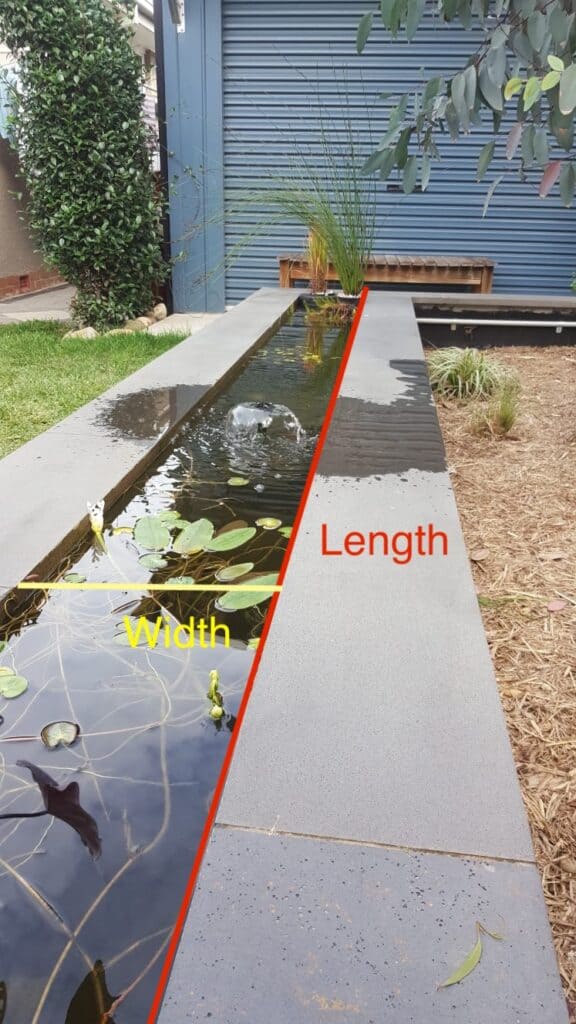
So the pond in the picture is 5m long and 50cm wide. Now always make sure you use the same unit of measurement!
So i take the length 5m and multiply by 0.5m (converting the centimetres into meters).
5 X 0.5 = 2.5m2.
So the surface area of this pond is 2.5m2
Circular pond surface area
Circular ponds are also easy enough to calculate.
All we need to know is the ponds radius.
The radius is half the diameter (which is the width).
The formula we use here is 3.14(pi) X Radius X Radius = Surface area.

So this small patio pond i built is 60cm wide. So the radius is 30cm.
My calculation looks like this 3.14 X 0.3 X 0.3 = 0.28m2
You’ll notice that i alway convert the unit of measure to meters.
This is because later on when working out the volume it’s much easier, because 1 cubic meter is equal to 1000litres of water volume.
So this small patio pond has a mere surface area of 0.28m2
Irregular shaped pond surface area
Calculating the surface area of irregular shaped ponds is more of an educated guess.
We need to measure the widest point and the longest point.
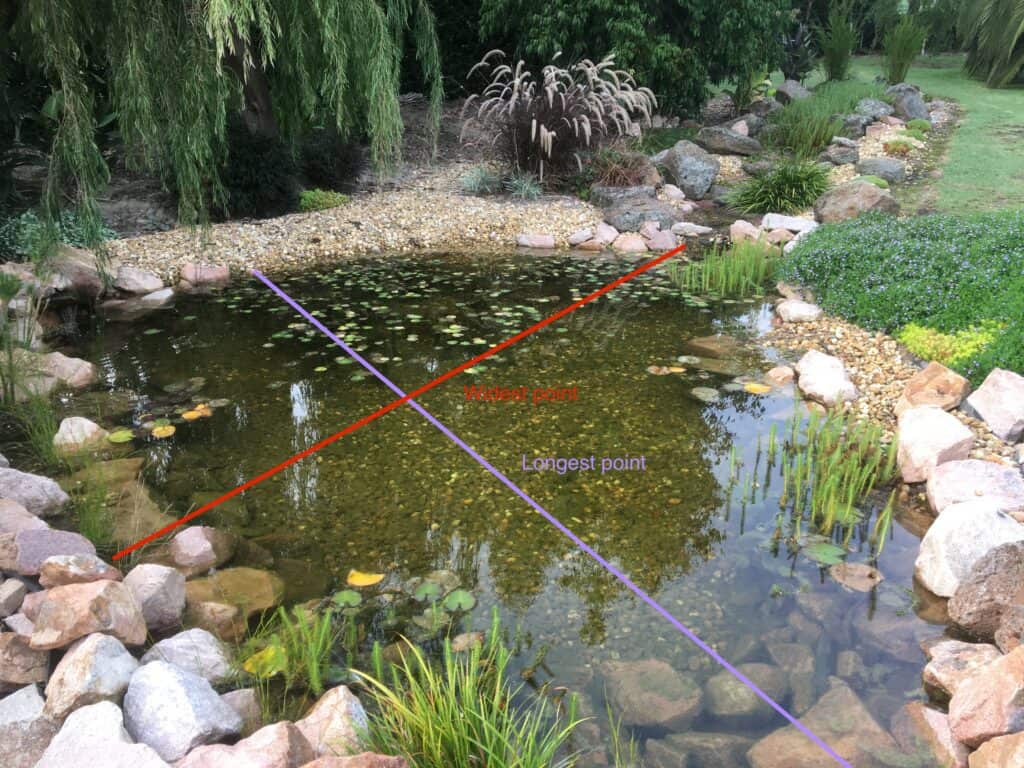
Now what i like to do is draw a little picture of the pond and place it within the confines of a rectangle or square.
As we know calculating the surface area of a rectangle or square is super easy.
So i draw my little picture something like this.
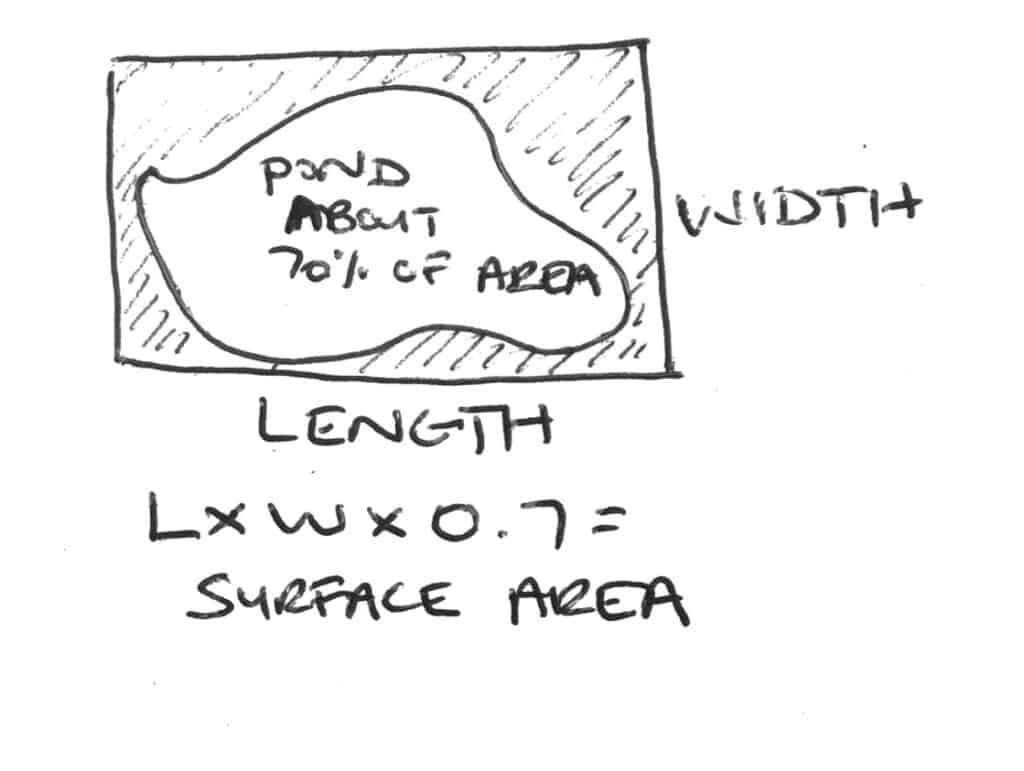
My little drawing helps me guess what percentage of the rectangle the pond takes up.
So now i can calculate the area of the pond by multiplying the Length X Width X 70%.
Remember the percentage will change depending on how much area within the rectangle the pond takes up.
This isn’t going to be exact but it better having a total guess.
So for instance the pond in the example fits in a rectangle that is 7m long and 5m wide.
Heres my calculation 7m X 5m X 0.7 (70% expressed as a decimal) = 24.5m2
Calculating pond volume
Now that we know how to calculate the surface area. Working out the volume is a cinch.
If the pond is a uniform depth like the patio pond example i gave before, we multiply the surface area(SA) by the depth(D).
Surface area X Depth = Pond volume
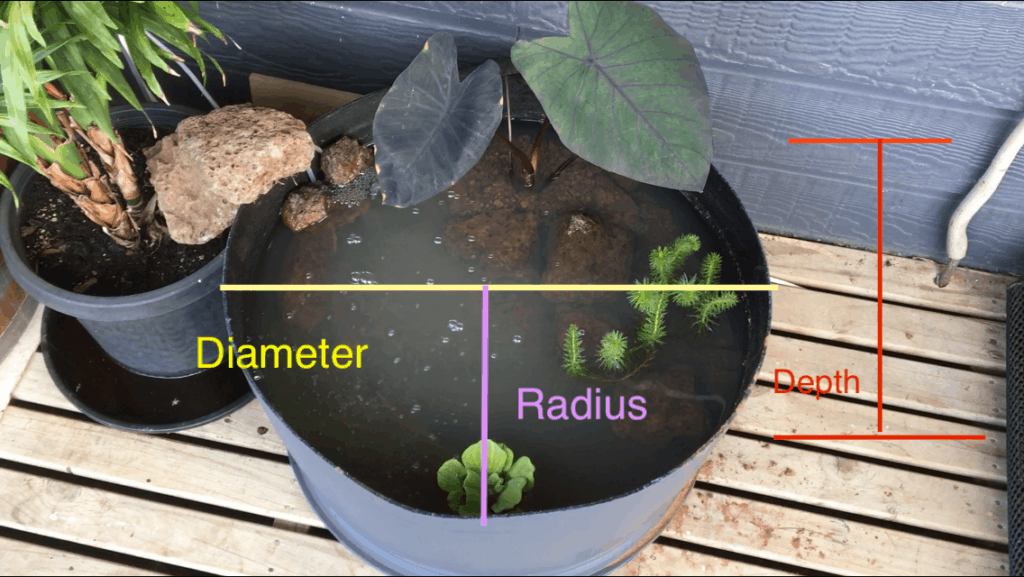
Heres the calculation for my patio pond.
We know the surface area was 0.28m2. The depth is 30cm or 0.3m.
So here’s the math. 0.28 X 0.3 = 0.084m3 (this is my volume)
Now remember i mentioned 1 cubic meter is equal to 1000 litres.
So if i multiply 0.084 by 1000 i get…… 84 litres.
So my small patio pond holds exactly 84 litres of water!
Calculating volume for ponds with varying shapes & depths
Here we go again with an educated guess.
When creating ponds of irregular shapes you’ll no doubt incorporate shelves of different heights.
This allows varying depth for aquatic plants that will naturalise the pond.
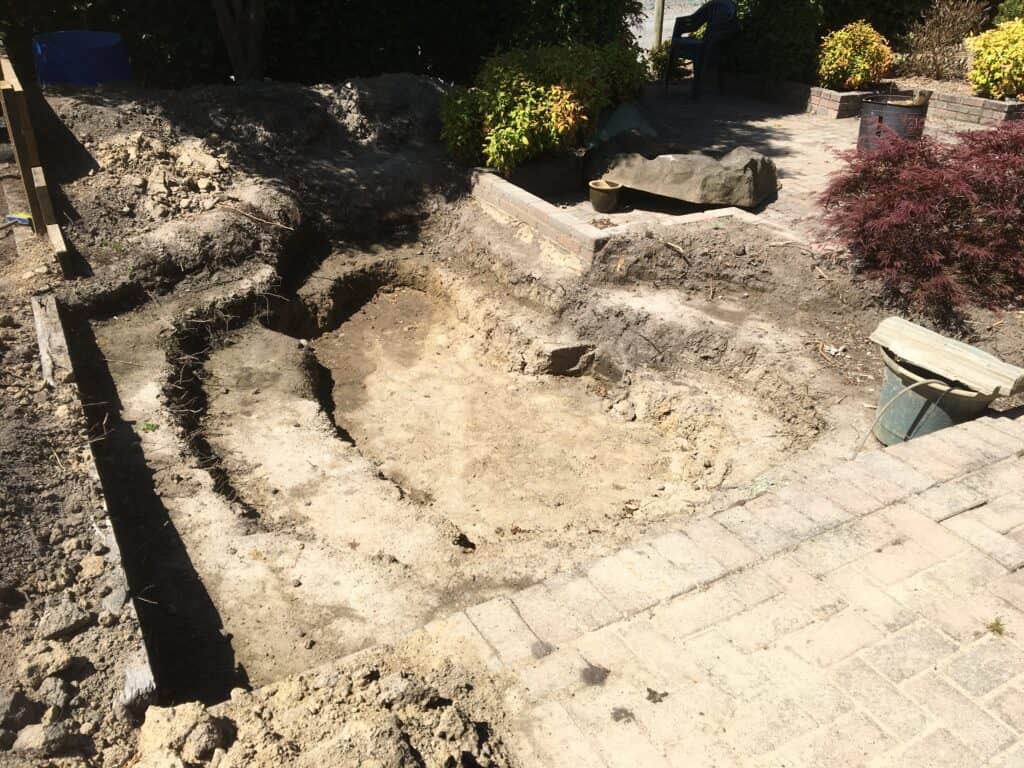
Because calculating the exact volume using a math formula is near impossible, i simply take 1/2 the max depth and multiply it by the surface area.
So for the irregular pond we worked out the surface area before. Let’s say the maximum depth is 60cm.
I would multiply the surface area by 1/2 the depth.
That looks like this.
24.5m (the surface area) X 0.3m (1/2 the depth expressed in meters) =7.35m3
Then we multiply the 7.35 by 1000 to give us the number of litres.
7.35 X 1000 = 7,350 litres.
So this pond holds approximately 7,350 litres.
Remember this is just an educated guess.
If you want to get the exact volume you really need to measure the water as it goes into the pond.
If you have a water meter this is easy.
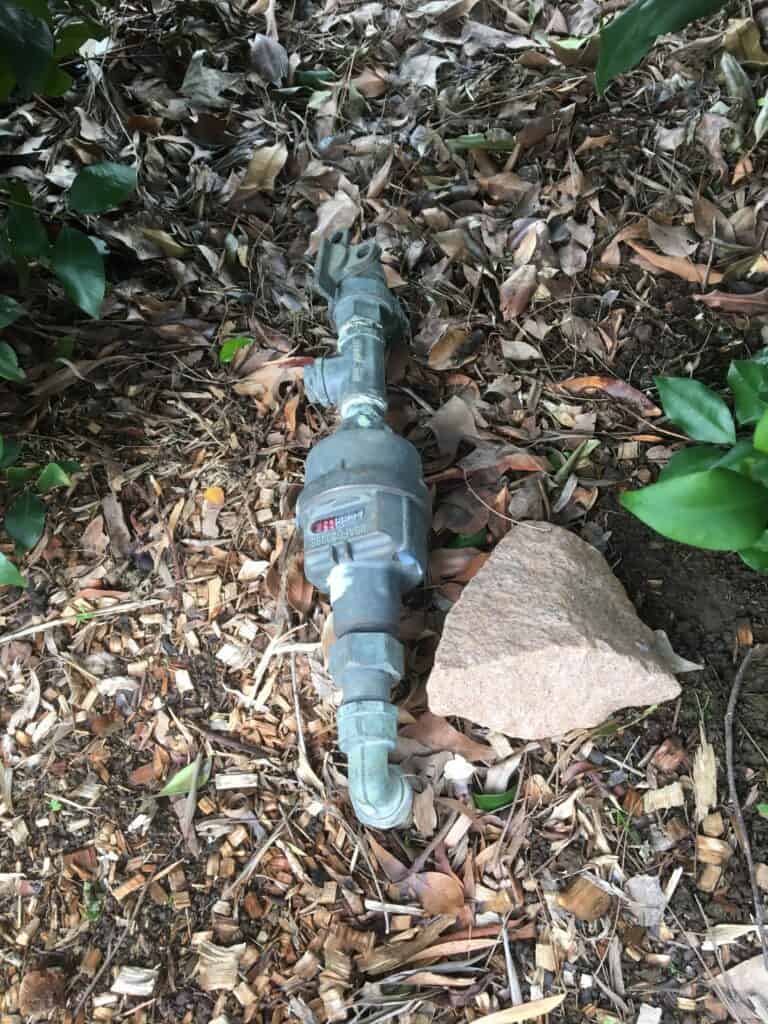
Just write down the number on the meter before you start filling the pond and subtract it by the number the meter reads when you finish filling the pond.
Alternatively you could calculate how many litres of water comes out of the hose per minute. Then multiply that number by the amount of minutes it takes to fill the pond.
Why knowing how many litres your pond holds is important?
Water treatments
From time to time you may need to use an additive or chemical to your pond.
There is a number of reasons this may be required: sick fish, unwanted algae growth, water top ups, etc.

Now that you know how to calculate the size of your pond you should be able to work out the correct dosage of any additives you need to add to the water.
Pump
It’s important to have rough idea how much water your pond will hold so that you can purchase the correct sized pump.
The general rule for a pond with fish is that the water should be circulated once every hour minimum!
So if a pond holds 1200 litres the minimum pump is a pump that can move 1200 litres of water per hour!
Now just because a pump is rated to move 1200L of water an hour doesn’t mean that it will.
The higher a pump needs to move water the less water it will move. This is known as head height.
All pumps are different and the flows they deliver at certain “head heights” will vary. The back of the box will show a curved line like the picture below.
As the water is pumped higher the output decreases.
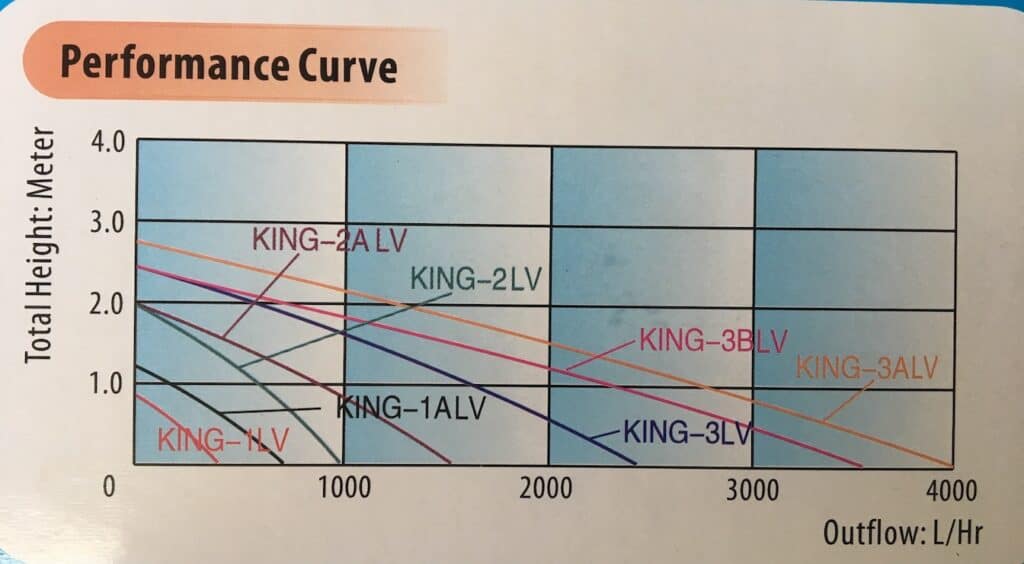
Another factor that effects “head height” is the distance the water is pumped.
Every 3m of hose it’s the equivalent of an extra 30cm in head height.
It’s not something that impacts much on a small pond. But if adding a stream to the pond, it’s certainly a factor.
As a general rule when buying a pond pump try and go over what you think you need.
It’s better to move more water than not enough. For more information on selecting the right pump click here.
The other main reason for knowing how much water your pond holds is to figure out how many fish you can have.
I have an article talking about fish stocking densities to keep your pond water clear and your maintenance minimal.
If creating a stream
The main reason you would want to know how much water a stream holds is to size the pond or reservoir that it enters into.
As a rule of thumb you need to store twice the amount of water as is in the stream. There is two reasons for this.
- Half the water from the pond or reservoir will be in the stream at any given time. The other half is kept in reserve. This ensures that the pump doesn’t run dry.
- If the power is turned off to the pump. The water can move through the stream and won’t flood the pond or reservoir, losing that water.
Hopefully you can now workout how many litres your pond or stream can hold. Remember to subscribe to our email list for special offers on all things pond related.
Thanks for reading.
